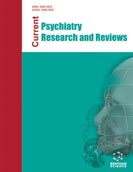Abstract
Background: Impulsiveness and compulsiveness, though traditionally assumed to represent the opposite poles of a spectrum, have increasingly been understood to have common, rather than disparate, features.
Objective: We investigated the influence of the ECS on the intricate interplay between impulsiveness and compulsiveness.
Methods: We conducted a search in PubMed, PsyhInfo, and Scopus by using the keywords compulsiveness, Obsessive-Compulsive Disorder (OCD), impulsiveness, Impulse Control Disorders (ICDs), addiction, ECS, serotonin, and dopamine.
Results: The ECS is famous for its role in motivational processes and reward signaling, contributing to the hedonic effect elicited by pleasurable activities. Impulsiveness involves an inability to delay pleasure; compulsiveness, in contrast, is associated with a postponement of present pleasure due to an increased sense of menace. Impulsiveness and compulsiveness work together to result in addiction. The manipulation of the ECS through pharmacological or genetic methods is effective on the manifestations of OCD, ICDs, and impulsiveness. The ECS is distributed throughout the basal ganglia, prefrontal cortex, amygdala, and hippocampus and interacts with serotonergic, dopaminergic, noradrenergic, GABAergic, and glutamatergic neural circuits which are all involved in impulsive and compulsive symptomatology. The ECS or cannabinoids exhibit divergent effects depending on environmental conditions, dose, and duration of exposure. The endocannabinoids are retrograde messengers inhibiting the presynaptic neurons (causing a braking effect) and released “on demand”, generating a fine-tuning adjustment of the neural activity.
Conclusion: How impulsiveness and compulsiveness, two apparently opposite traits, interoperate might be accounted for by the specific functions of the ECS.
Keywords: Compulsiveness, impulsiveness, addiction, endocannabinoid system, obsessive-compulsive disorder, impulse control disorders.











